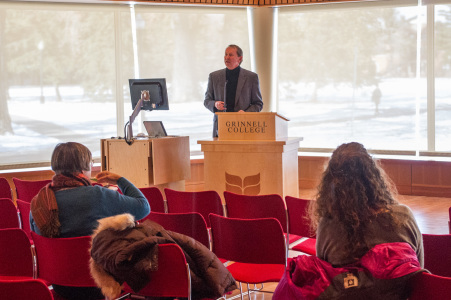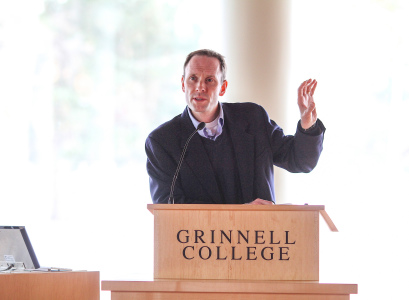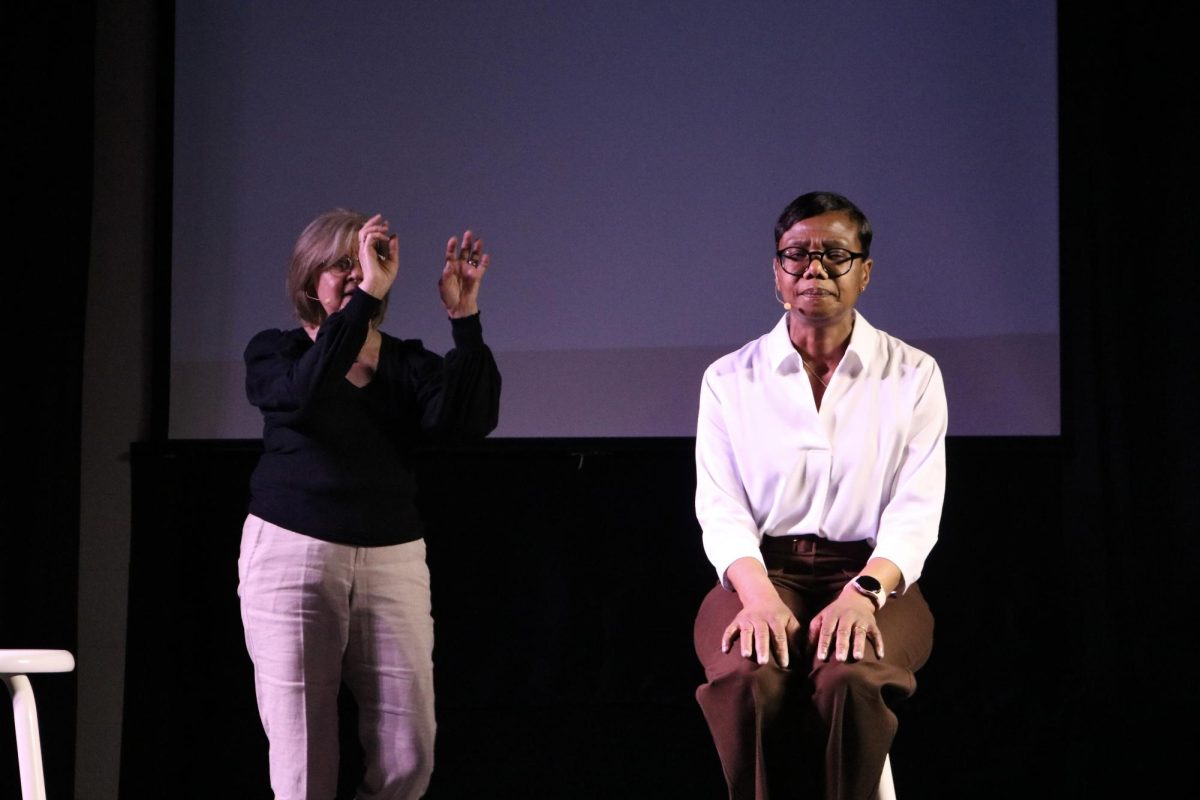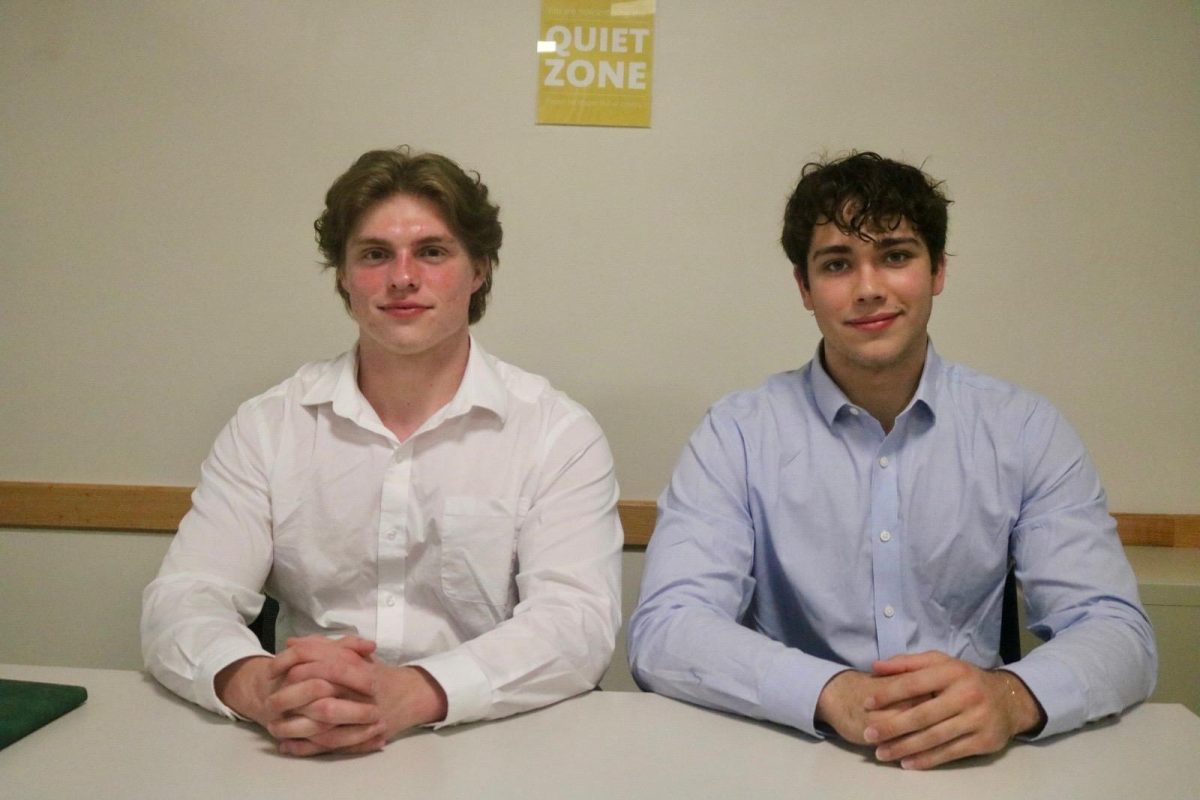This week, Grinnell’s Office of Analytic Support and Institutional Research and the Dean’s Office hosted two “Inside Grinnell” events in JRC 101, respectively, to outline the academic future of the College. The first, “The ‘Open Pathway’: Our New Regional Accreditation Process,” explained the steps Grinnell will take over the next few years to maintain its status as an accredited university. The second, “Innovation in the Liberal Arts,” discussed the possibilities that Grinnell has for future academic development.
Randy Stiles, Associate Vice President for Analytic Support and Institutional Research, spoke to a sparse crowd Monday at noon, focusing on the accreditation process that Grinnell will go through in 2018. Maintaining accreditation status is necessary because it allows the school to keep its federal funding and permits credit transfer to and from Grinnell. Unlike other countries, becoming accredited in the United States is not a government procedure, but rather is run through several different organizations. For that matter, the Higher Learning Commission of the North Central Association of Colleges and Schools (HLC/NCA) accredits Grinnell. The College usually goes through this process every 10 years, but this time it will be different, Stiles noted.

“Since the last time Grinnell was reviewed and accredited in 2008, the process has changed dramatically,” Stiles said.
Stiles stressed that there was no need to be concerned that Grinnell would not be accredited, even under the new rules. Schools with low graduation rates and low expenditures per students are more suspect during this process. He clarified that Grinnell should not have anything to worry about.
“There’s no doubt that Grinnell will be accredited,” he said. “It’s been accredited in the past, it will be accredited again. It’s a high-quality school. But there’s important work to be done to avoid additional work.”
The largest difference in the process is how schools will be asked to answer questions. In the past, general questions asked by HLC/NCA often led to creative answers.
“The questions that the institution will be asked are much more explicit than they were in the past,” Stiles said.
The HLC/NCA considers five criteria in its analysis, including the school’s mission, integrity, teaching and learning and resources. These five criteria are comprised of 68 questions, which the school must answer in a 35,000-word online document. The accreditation commission will then send a team to Grinnell for two days to verify what the document states, which will influence its final decision.
Although still a ways off, the Dean’s Office will begin working on crafting the answers to these 68 questions over the next few years.
“It is an opportunity to make this place better,” Stiles said.
The following day, Michael Latham, Dean of the College, spoke at noon about innovation in academic settings. Latham first discussed the digital humanities, a relatively new field that has gained relevance within the last two decades. He specifically noted a MAP that Professor Erik Simpson, English, led 10 years ago that used a website to connect students’ work with a broad audience outside of just their professor.
“Students were getting comments and feedback that went well beyond the classroom,” he said.

Photo by Aaron Juarez.
Latham illustrated some other digital projects happening at peer institutions and noted the potential that Grinnell has for incorporating spatial mapping, textual analysis and large data sets, as well as other digital techniques.
Perhaps the theme that Latham stressed the most was that of collaboration. He spoke on the long-term advantages of using technology and digital strategies in undergraduate research, but also spoke about how important collaborative writing and analysis is in the learning process. He used an example featuring an economist analyzing New Delhi, a historian of Southeast Asia and a medical anthropologist studying India, temporarily sharing a work space in order to promote collaboration.
In this same vein, Latham discussed the importance of the new Social Science and Humanities Center in providing an innovative learning environment. A traditional school of thought is to divide buildings into sections of each academic discipline, but Latham spoke to the advantages of more “fluid arrangements.”
To conclude, Latham discussed international education, especially in terms of continuing to adapt to a constantly changing academic world.
The next event of this series, “Inside Grinnell: International Students” will be held Tuesday, Dec. 9 at noon in JRC 101.

















































